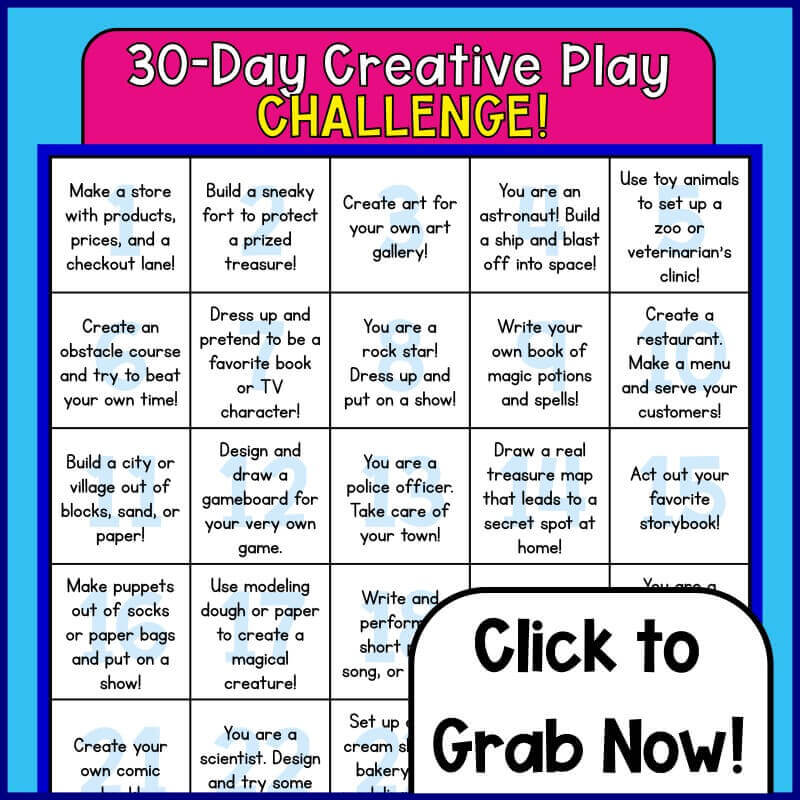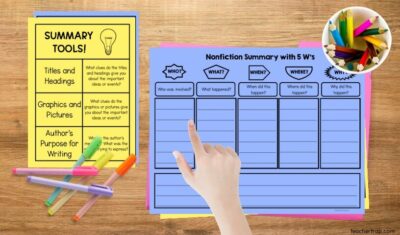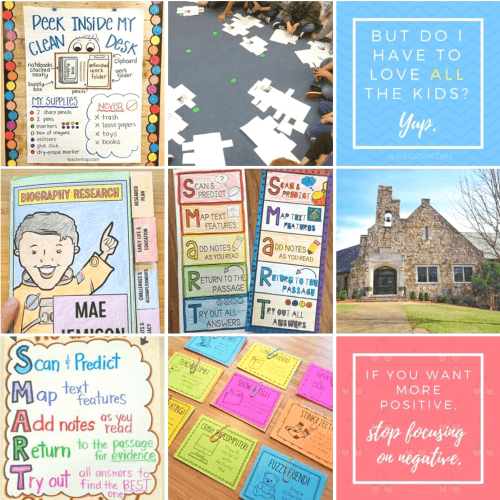Many of us were just thrust into the challenging new role of ’emergency homeschooler’ without a moment’s notice or a single second of training. As an elementary school teacher and now (surprise!) an ’emergency homeschooler’, I want to share some essential tips for parents trying to manage this new (temporary) role.
I hope, with all my heart, to relieve some of the stress I know many of you are feeling right now. I’m also sharing my favorite FREE online learning resources, plus some fun daily challenge boards to keep kids engaged and busy while stuck at home!
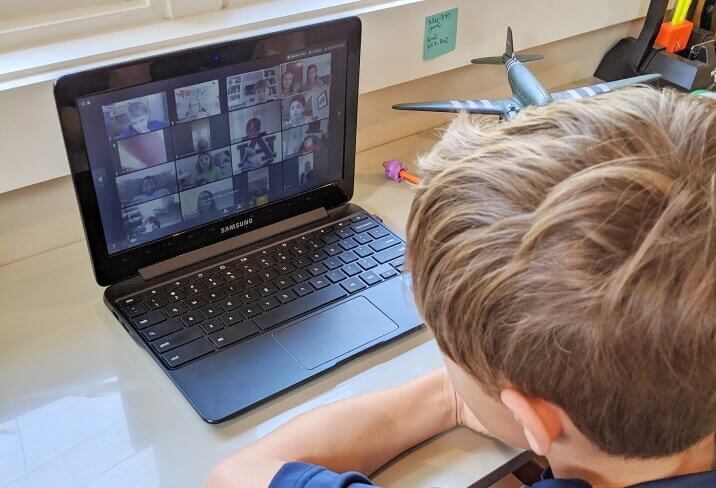
1. Relax. Ease Up. Repeat.
The first thing I want to say to all you ’emergency homeschoolers’ is that your child is going to be just fine. Your child’s academic success in life is NOT at risk.
We are in the middle of an unprecedented global event that is impacting people financially, physically, emotionally, and spiritually ALL AT ONCE. What matters most right now is your own emotional well-being and the emotional well-being of your family.
Plus, realize that kids across the nation are at home, most receiving minimal instruction, if any at all. Next school year, teachers will adjust. Teachers are masters at adapting instruction to students’ needs! The skills will be taught, the curriculum adjusted, and everything will carry on as normal.
So please, give yourself a break. A big one. Your job right now is to take care of you and your family and to do your best to include some home learning along the way. You don’t need to scour Pinterest in an attempt to become an expert homeschool mom (’emergency homeschooling’ is different!). This is a temporary role during an extremely challenging time. Do what you can, have fun with it, and be exceptionally gentle with yourself right now.
2. Be Flexible and Find What Works for YOU
So many parents (looking at you, Super Moms!) are trying to recreate a classroom schedule at home and feeling extremely frustrated in the process. Please, let yourself off the hook and do what works for you and your family. Look at your day, the time you have available, what you feel is right for your family right now, and go from there.
Generally speaking, schoolwork time should only add up to about an hour a day for lower grades (K-2) and 2 hours a day for upper grades (3-5), broken up into manageable chunks. The rest of your day should be for fun, playing, walking, bike rides, projects, reading books together, games, cooking, chores, cuddling, and whatever else feels good!
We’ve been home two weeks and changed our ‘daily routine’ three times! We’ve settled on doing school first thing in the morning for 2 hours a day, and then reading before bed. That’s it. The rest of the day is a mixture of free time to play, outdoor time, TV/tech time, and family time. Be flexible with yourself and make it work for your family. This does not need to look the same in every home and you do not need a color-coded activity chart (unless you just want one!).
3. Focus on Essentials
Many teachers and schools are sending home detailed work plans or providing endless online resources for students, but some are not. If you’re overwhelmed with options or unsure where to put your energy, I encourage you to focus on the essentials: reading and math. Reading and math are the two subject-areas where students benefit the most from steady and ongoing practice.
Just to clarify, I’m not encouraging you to limit your child to just reading and math. If you have the time, the resources, and a willing child, run with it! Have fun delving into science and social studies and tackling bigger projects. But if you’re managing multiple children, facing limited time, or just completely overwhelmed, give yourself permission to simplify and focus on essentials. I promise, your child will be just fine.
A Note About Reading: If your child is not yet reading independently or you don’t have reading materials on the right level, don’t worry! Reading TO your child is one of the most powerful and effective ways to help them grow as a reader. Please, don’t force your child to struggle through texts that are TOO HARD. Don’t sit and correct them as they read or push them to frustration. Let reading be fun and enjoyable and do LOTS of it!
***At the end of this post, I’ve included a list of my favorite FREE online resources for Reading and Math
4. Prepare a School Space
School requires stuff. If the ‘stuff’ isn’t readily available, your child is going be distracted and asking for more assistance than necessary. So before getting started, gather all the supplies that might be needed. This might include paper, pencils, pens, markers, colors, erasers, sticky notes, scissors, etc. Put everything in one place, like at a desk or table, or create a little portable caddy with all the ‘stuff.’
If possible, provide a quiet space to work, without the distractions of other children, television, or activity. You might also consider having kids select a drink and snack before beginning work, since that can be yet another distraction that slows things down.
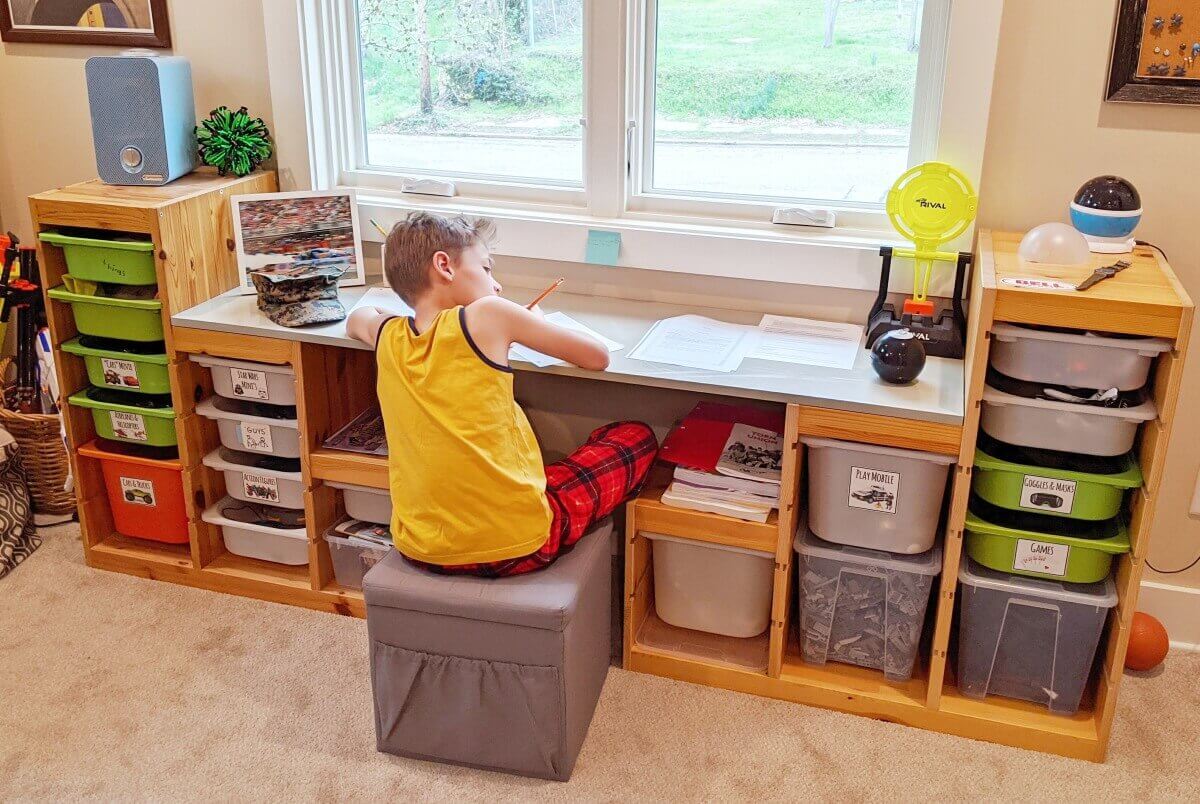
5. Provide Structure With Choices
Routines are an important part of any classroom and give structure to the day. They let kids know what to expect. It’s helpful to create a simple daily routine for your child. It doesn’t have to be detailed, complex, or rigid! It’s just a way to help them visualize their day and relax into a predictable pattern. It could be as simple as a chart listing Breakfast, Reading, Break, Math, Lunch, Free Time, or might include specific times and activities. Do what works for your family.
Within the structure you create, you’ll want to offer lots of choices. Choices are the key to keeping kids engaged, happy, and focused. You can offer simple choices like where to sit, what to write with, or the order the work will be completed.
Any time you feel resistance from your child, consider offering a choice…
- Would you like to do reading or math first today?
- Would you like to sit at the table or on the floor while you read?
- Would you like to write with a pen or a pencil?
These little choices can help kids feel empowered and lead to better cooperation.
6. Clarify Roles and Expectations
Kids need to know exactly what you expect of them. Remember, this is new to all of us! The more you can help your child build a vision of what schoolwork time should look like, the better your results will be. You can even work with your child to create the plan for each day.
- What is our plan today?
- What do we want to accomplish?
- What will help you do your best work?
A quick discussion before getting started can make a big difference!
In addition, it’s useful to clarify roles. In a child’s eyes, the role of a teacher and a parent can be quite different. I know some homeschool moms who even put on a special ‘teacher hat’ to signify the shift to school time.
For some children, it’s helpful to discuss these new roles. One thing we do in classrooms, that might also be helpful at home, is to write up a list that explains your job as the ‘teacher’ and the child’s job as the ‘student.’ This is especially helpful if your child is wanting you to do the work with them or for them!
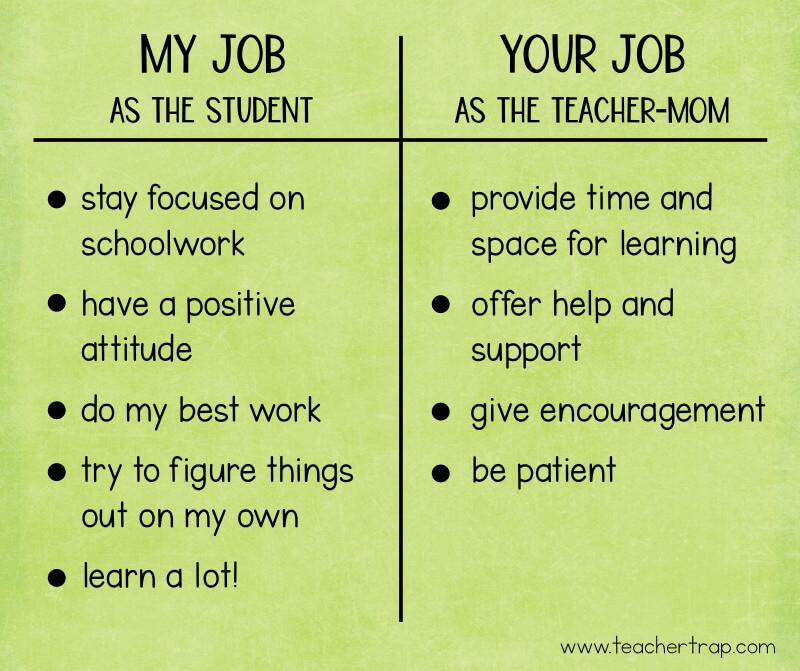
7. Balance Space and Support
My next tip is about paying attention to the balance of space and support you give your child. Most kids don’t like to be smothered, but also don’t want to feel abandoned with work that is too challenging. The goal is to strike up a balance between the two.
Every child is different, but I generally recommend setting up a routine that includes some independent time (walk away!) and some support time (offer help). I tell my son that during ‘independent work time’ he should do the best he can to figure things out on his own. If he gets stuck, he can skip that part and move on to the next thing. After the ‘independent work time’, we meet up and he has a chance to ask questions or get help.
For younger children (K-2), 15 to 30 minutes of independent time before offering some support might be appropriate. For older children, (3-5) 30 – 60 minutes might be just fine. It will vary by child, but it’s important to build up that independence!
8. Incorporate Activity and Movement
Please understand that kids at school are very active. In the classroom, we transition often, moving from desks to the carpet to tables, from whole group time to small group time to independent time, from hands-on work to written work to oral activities. The kids are always moving!
Don’t expect your child to sit and focus for hours on end doing worksheets or quiet tasks. This is not what happens at school and does not support meaningful learning. You’ll want to allow for breaks, talking, movement, and hands-on work!
9. Practice Accountability With Kindness
Children can become frustrated with school work for a variety of reasons. Maybe the work is too easy and they feel bored, maybe the work is too hard and they feel overwhelmed, or maybe they need time to move or talk.
When this happens, it’s extremely helpful to respond with patience and kindness, and most importantly, without emotion. This can be tough! It’s hard to watch your child struggle and it’s exhausting to deal with whining, crying, pouting, and fussing about schoolwork.
But, if you stay cool and calm, your child is much more likely to feel better faster and much less likely to repeat the unwanted behavior in the future.
If your child is fussing about something that you KNOW they can handle, try phrases like…
- I know you’re upset, but I also know you can do this.
- It’s okay to feel __, but we’re still going to finish this.
- This might feel hard, but you can do hard things!
If you’re child is resistant or a little crabby, try offering choices like…
- Would you like to read here or in the chair?
- Should we finish this first or switch to this?
- Should we take a snack break or a dance break?
As I’ve said, we are already under so much stress right now, there is no need to add more stress to your life. Hold your children accountable for what you know they are capable of doing, but don’t give in to frustration or anger.
10. Let it be Fun!
Kids are made for learning! They love to explore, investigate, experiment, and discover. Let learning be fun and keep a light and easy attitude about the whole thing. This should not feel like torture and if it does, I guarantee that your child is not learning much at all.
A Final Disclaimer: No matter how hard you try or what a great job you do, there will still be tough days! Kids are people, too, and have emotional ups and downs just like us. When that happens, don’t worry about it! Let it go and know that you can try again the next day!
Daily Challenge Boards
Just for fun, I created these daily challenge boards for my son, so I thought I’d share. It’s been raining a lot here, so I tried to think of activities we could do outdoors or in! You can grab both for FREE in my TPT Store.
Favorite FREE Online Reading Resources
ABCya (Literacy Games for PreK-5)
Starfall (Literacy Games and Reading Activities for PreK-3)
Storyline Online (Storybooks Read Aloud By Famous Actors)
Wonderopolis (Nonfiction Texts for 2-5)
Time for Kids (Digital Nonfiction Magazines by Level K-5)
Raz Kids (Incredible Collection of Leveled Online Readers!!)
*NOTE: Raz Kids is offering free subscriptions through the end of this school year. To use, you’ll need to sign up, add your child as a ‘student,’ and create a login for them. Your child will then visit the website and click ‘Student Login.’
Favorite FREE Math Online Resources
PBS Learning (Videos and Lessons for K-5 Math by Skill)
Khan Academy (Instructional Videos by Grade/Topic)
ABCya (Math Games for PreK-5)
Prodigy (Game Based Math Skill Practice 1-5)
*NOTE: Prodigy requires signing up for a free account. This will allow you to assign grade-level appropriate skills and track progress.
We've Got This!
Homeschooling is an unexpected challenge for most of us, but perspective is everything!
Each day, I try to remind myself…
Even though this feels hard, I’m so grateful that my child is safe at home with me. We have the food, water, and shelter we need right now. I get to choose how we spend our day. I get to choose my attitude about this temporary challenge. This is a unique and special time that I get to spend with my family.
And some days, I cry in the bathroom and decide we’re having icecream for lunch. ![]() Do what you need to do to make the best of this awful crisis and know you’re not alone!
Do what you need to do to make the best of this awful crisis and know you’re not alone!







